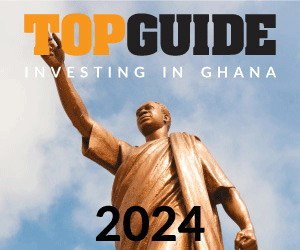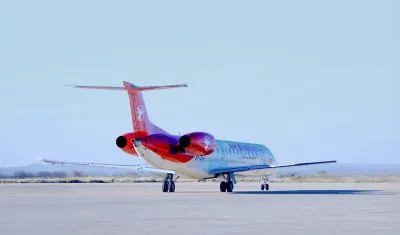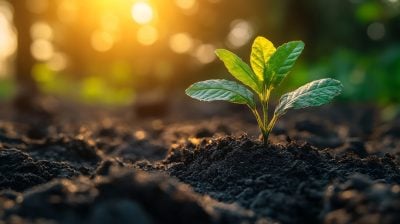According to the government’s new gas master plan, the industry should eventually generate $6-8bn a year for the state, far more than Maputo’s entire budget for 2012.
Investors in the Mozambican gas sector are moving from exploration to the development of an LNG plant remarkably quickly. Since the first deepwater discovery in 2010, a string of important finds have been made and contracts for the construction of the first ever LNG project on the east coast of Africa have been signed. The scheme should generate much-needed revenues for the government, while also providing the means to fuel a Mozambican industrial revolution. In December, Anadarko and Eni signed a heads of agreement (HoA) regarding the coordinated development of their gas discoveries in Offshore Areas 1 and 4. Their respective gas fields in the Rovuma Basin in the far north of Mozambique will be developed separately but will supply a joint onshore LNG plant in Cabo Delgado Province, in the north of the country.
This cooperative approach will reduce development costs, while also simplifying the various environmental impact assessments (EIAs) that must be undertaken before construction can proceed. A string of gas projects in Australia have been held up by EIAs. The president and chief executive of Anadarko, Al Walker, said that the agreement would “lead to a unitisation agreement to further facilitate the efficient development of the common resources, as well as the independent reservoirs on both blocks, enabling enhanced economies of scale through shared infrastructure and facilities”.
The deal was partly driven by the government’s desire to simplify development, as much of the gas on the two blocks actually comprises a single reservoir.
An HoA does not sound like the most concrete of agreements but construction contracts for both offshore infrastructure and the LNG plant itself have already been awarded. A joint venture of Fluor Corporation of the US and Japan’s JGC Corporation has been awarded the engineering and design contract to develop the first phase of the plant. It will have four liquefaction trains – or production units – giving combined production capacity of 20m tonnes a year. The project will be developed with expansion to 50m tonnes a year in mind.
Eni has 70% equity in Area 4, with partners Galp Energia (10%), Kogas (10%) and Empresa Nacional de Hidrocarbonetos (ENH) (10%). Anadarko operates Offshore Area 1 with a 36.5% stake, alongside Mitsui E&P Mozambique Area 1 (20%), BPRL Ventures Mozambique (10%), Videocon Mozambique Rovuma 1 (10%) and PTT Exploration & Production (8.5%). PTT of Thailand bought its stake from the UK’s Cove Energy for $1.9bn, outbidding Shell in the process, while both BPRL and Videocon are based in India, so Asian firms are heavily involved in the venture. Stateowned ENH also has an option to take the remaining 15% stake at a later date. Two main fields have been identified on the block to date: Prosperidade, which holds 17-30 tcf of recoverable natural gas reserves; and the Golfinho/Atum complex, which is estimated to contain 15-35 tcf, although further appraisal work is required to determine the size of the discovery.
Appraisal wells are drilled to provide more information about the extent of an oil or gas field that has already been identified. Further appraisal work will be carried out on a third discovery, Tubarão, during the course of this year. First production is expected in 2018, while further exploration in the region is likely to yield more new discoveries. Hopes are also high that coal bed methane (CBM) gas reserves will be developed in Tete Province, in the northwest, where the coal industry is experiencing a boom on the same scale as the gas industry. CBM could be used in exactly the same way as natural gas: for domestic supply or LNG production.
A financial windfall
It is important to put such developments in context. Eni has suggested that the entire venture could require investment of $50bn: an enormous figure in comparison with Mozambique’s GDP of just $12.8bn in 2011. This scale of the financial commitment also suggests that shares in the twin projects could be sold to other international companies, in order to reduce the level of risk. The most likely suitors are international firms with experience of LNG development, such as Shell or ExxonMobil, or the type of Asian investors that are already involved in the two consortia. Japanese companies, for instance, usually take equity in LNG projects designed to supply the Japanese market. Selling equity would also help the initial investors recoup some of their initial outlay and reduce their debts.
The benefits for Mozambique are huge. While some LNG is sold on the spot market, most production is tied in to long-term deals, usually of about 20 years. This provides a high degree of revenue certainty, both for investors and for governments. In addition, most Asian gas contracts are tied to international oil prices. In an age of the $100 barrel, this translates into healthy revenues. It is important that the government of Mozambique prepares diligently for its gas boom. The country has successfully recovered from its civil war over the past two decades and has been generally well governed. However, there is still a lack of capacity within the government and state owned energy companies to cope with the level of investment heading rapidly towards the country. Such massive oil and gas investment has destabilised many African countries and it is vital that Maputo both secures advisors and also ensures that officials are adequately trained.
Domestic supply
According to the government’s new gas master plan, the industry should eventually generate $6-8bn a year for the state, far more than Maputo’s entire budget for 2012. The government hopes to set up a sovereign wealth fund, along the lines of Norway with some of its gas revenues, to ensure that the newfound gas revenues are used for the benefit of generations to come. The Minister of Minerals, Esperança Bias, said: “We want more than just LNG. We have huge reserves and we want to see how we can use the gas in the local, regional and international market.” Electricity and liquefied petroleum gas (LPG) are the most likely domestic outlets but fertiliser production could help the agricultural sector.
Methanol and gas-to-liquids (GTL) plants have also been proposed, while steel and aluminium production could be expanded to take advantage of local feedstock. One option that has received little interest but which could be commercially viable would be to pipe gas to South Africa. Mozambique already pipes gas from the Pande and Temane fields in the south of the country via an 865km pipeline to Sasol’s GTL plant but the Rovuma fields lie 1,700km further north. Nevertheless, such a project could help to create a more diverse market for Mozambican gas. Any north-south pipeline into South Africa could also be utilised to transport some Rovuma gas to Mozambique’s industrial and commercial heart around Maputo and Matola. It will be interesting to see whether the government insists on subsidised prices for locally supplied gas. Such a policy can create huge problems, as seen in Nigeria, where investors have been reluctant to supply domestic users because it is not economically viable. While geological good fortune sets the agenda, the government still has an important role to play.
Want to continue reading? Subscribe today.
You've read all your free articles for this month! Subscribe now to enjoy full access to our content.
Digital Monthly
£8.00 / month
Receive full unlimited access to our articles, opinions, podcasts and more.
Digital Yearly
£70.00 / year
Our best value offer - save £26 and gain access to all of our digital content for an entire year!

 Sign in with Google
Sign in with Google 





